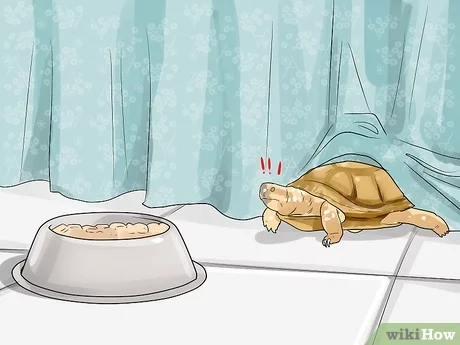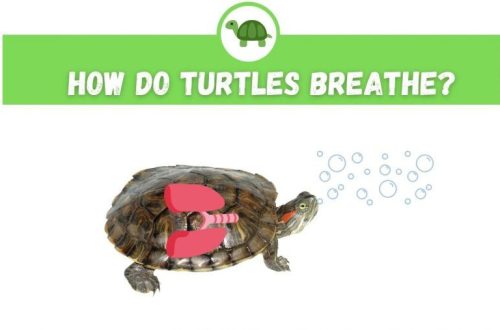
Where to give the turtle? How to find a new home for a turtle?
Not all turtles are the same. Some types cost a lot of money, and some types (of which there are a lot) are not needed and for nothing. They can buy a land turtle from you if it is not expensive, but there are few people who want to buy an adult red-eared turtle even for free. Then what to do with a turtle that you no longer need, for which you cannot take care of for any reason, or that was thrown to you or given as a gift?
- Offer to friends, acquaintances, relatives, maybe they were just about to buy a turtle?
- Offer on sites, forums about turtles or about animals, of which there are quite a lot on the Internet. Place an ad on Turtle.ru Bulletin Board or avito.ru and wait patiently for someone to want to take it (the device will take from 1 month or more). Be sure to use social networks and groups for the free return of things and animals.
- Try to give it to pet stores, some may even accept your pet in order to resell it later. Zoos generally do not accept animals.
- Offer to Children’s Homes, Pioneer’s House and other social organizations for children. Although it is far from a fact that the turtle will be provided with good and correct conditions and care there. In kindergartens, living corners are disbanded everywhere.
- Release in one of the turtle places in your city, for example, a pond in the shopping center (the conditions are not so hot, but the turtles live there, and there is a large overpopulation of turtles)
- Nikolsky’s bog or Mediterranean tortoise can be transferred to the HRC for release or to a hatchery from May to September.
- Be a conscientious citizen and keep the turtle for yourself by purchasing an aquarium and equipment.
Still, try not to leave the turtle to its fate, because it is not known in whose hands it can fall and how long it will live after that.
You found a turtle on the street. What to do?
To get started, take her home and place her in a box or container that she won’t escape from. Read more in the article…
You saw a turtle in the city pond. What to do?
If you saw a marsh turtle in a pond, then there is nothing to worry about, they live quite well in ponds and lakes, winter normally, so let them live in freedom. If you saw a red-eared turtle, whose habitats are the south of the USA and Mexico, then there are quite a lot of such turtles now “living” in the ponds of large cities. Such turtles are brought to Russia from farms in Europe and Asia in huge quantities and sold at a very low price – 100-200 rubles. A turtle bought as a gift for a child or even an adult quickly becomes unnecessary and is often released into local ponds, where the turtle usually freezes to death in winter, only the most tenacious survive.
You saw such a turtle in the pond and you felt sorry for her. First of all, think about where you will put it if you catch it? If you are not ready to take her home and leave her for good or to deal with her placement in good hands (which can take up to six months or more), it is better not to start doing this. The HRC does not accept adult red-eared turtles because there are too many of them and there are very few overexposures. And secondly, think about how you will catch this turtle? Turtles are not in vain called Red Ear Sliders, at the slightest danger they slide off snags, stones or from land into the water and quickly swim away. It requires a lot of dexterity and a large net or net. If you decide to catch a turtle, then no one except you will climb into the water with a net, so decide for sure whether you need it and whether you can do it. If yes, then go for a net to a pet store or a fishing store and save the unfortunate animal. Members of the HRC tried several times to catch red-eared turtles from the ponds, but the turtles were never seen there again or caught.
How to catch a turtle from a pond?
The most acceptable option (although not at all simple) is to buy a hefty net and catch a turtle with it. Two people from one side of the pond and the other (if the pond is not very large) pass through the pond with a net, and a turtle comes across it. You can also use a small net, but be sure to use more fragrant fish as bait (cut it and attach it to the net). And you will have to spend a day on this, because you will need to regularly check the network so that if someone gets caught, they will not suffocate and get confused. Another option is to use a net, which you can use to try to catch a turtle that has surfaced to the surface. Not every attempt to catch a turtle is successful.
Can a turtle survive in the natural conditions of Russia?
If your swamp turtle escaped at a dacha in the Moscow region, or you yourself want to set the turtle free, then if there is a non-freezing pond with fish nearby, it has a good chance of getting to it and successfully wintering in it. The necessary conditions are a non-freezing reservoir, fish and the absence of people who can catch it with a net or a fishing hook. The red-eared turtle with a 95% probability will die in the reservoir of Moscow and the Moscow region and regions north of the Rostov region. The Central Asian tortoise may die if it does not find a good place to winter. There were cases when a turtle was found in the country a year after its loss. But not every turtle is so lucky, many depend both on the turtle itself and on weather conditions.
Can turtles be released?
You can, but after you consult with a veterinarian about the health of the turtle and do tests, and only if the turtle has not lived very long in captivity. A healthy turtle can only be released in its native habitat. For marsh turtles – these are the rivers and ponds of Astrakhan, for Central Asian — Kazakhstan, Uzbekistan, for Mediterranean – Krasnodar Territory (you can contact Mark Pestov for release of turtles – www.dront.ru), for Trionics – Khabarovsk Territory. Other species (for example, red-eared) do not inhabit the territory of Russia, Ukraine and Belarus, so they cannot be released there. The release of animals in places where they do not live is an administrative offense in accordance with the law of the Russian Federation on the protection of nature. The most obvious example of the environmental damage from invasive species is the nature of Australia.
You have lost your turtle. What to do?
If this happened in your home: 1. Check all gaps closest to the aquarium/terrarium, including places under sofas, cabinets, etc. A turtle can fit into a vertical gap between a cabinet and a wall, for example, but is unlikely to crawl too far in that position. 2. Listen carefully. Within a week, the turtle will rustle somewhere, or even crawl out, and you can catch it. An aquatic turtle will not die from dehydration in 1-2 weeks, like a land turtle, so do not panic and look. And, of course, carefully look under your feet when you walk around the apartment.
If this happened in the country, on vacation, on the street: 1. Search in the grass, bushes both near the place of escape and far away. The turtle can crawl in any direction. They are very good at burrowing into the grass and have a camouflage color. Slap the grass with your hands and feet for “stones”. 2. Print/Write an advertisement for a lost turtle with its appearance and size, your phone number and post it in your area. Promise a reward. 3. Search the Internet to see if anyone has found turtles lately. A turtle can be found in 1-2 years, and during this time it can live quietly in the wild. 4. Consider your mistakes and get a new turtle if the old one is not found, if you have the right conditions for this.





